Conductance
Formula for the conductance in a material
where
Ballistic transport
Ballistic transport refers to the condition where electrons or other charge carriers move through a material without being scattered by impurities, defects, or lattice vibrations within that material. In typical conductive materials, electrons often collide with atoms and other electrons, which scatter them in different directions. This scattering limits the flow of current and contributes to electrical resistance. However, in ballistic transport, electrons can travel through the conductor (often a very thin or very clean wire, or a nanoscale device) at high speeds and over relatively long distances without scattering.
This happens when the dimensions of the material are shorter than the mean free path of the electrons, which is the average distance an electron travels between collisions.
Definition of mean free path:
where
Ideal quantum wire
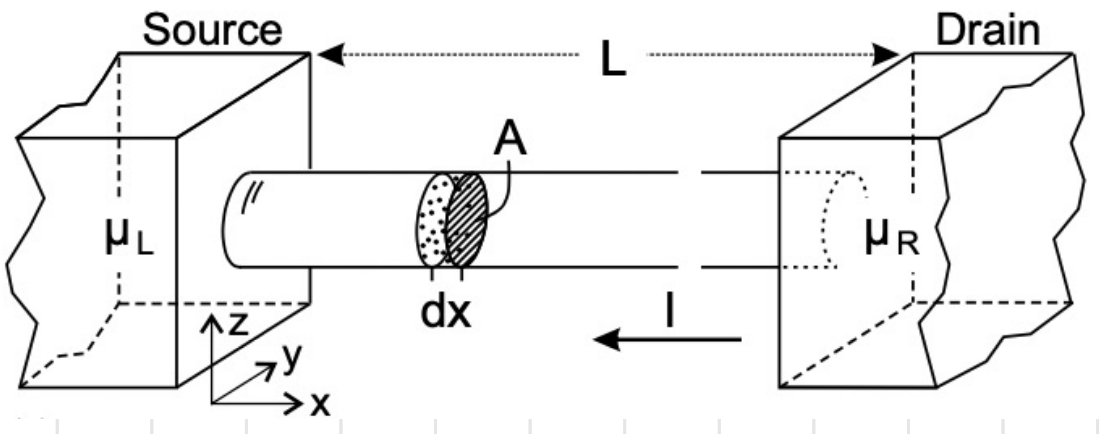
We make some assumptions to simplify the scenario and be able to arrive at the result:
- No scattering event, transport in the channel is perfectly ballistic
- The electrons entering the reservoir contacts are instantaneously in equilibrium with them.
- Contacts are reflectionless: the transmission probability from wire to contact is unitary
- Temperature=0
- The chemical potential of the left side its higher than the chemical potential of the right side
so that electrons will flow to the right
Let’s see the solution of the Schrödinger equation for the wire, which we already know them from Quantum Wire:
Simplified case: single band
Now, recalling the definition of the current from the classical physics:
where the total charge in a small volume of length
so we can write:
The goal is to write the current as a function of the energy since it is what changes from left to right. The number of electrons in the wire is:
We can substitute this expression in the formula above to get the current as a function of the number of electrons:
We want to write the current as function of the energy. We take an infinitesimal of
We get
The last piece to get to the desired formula is
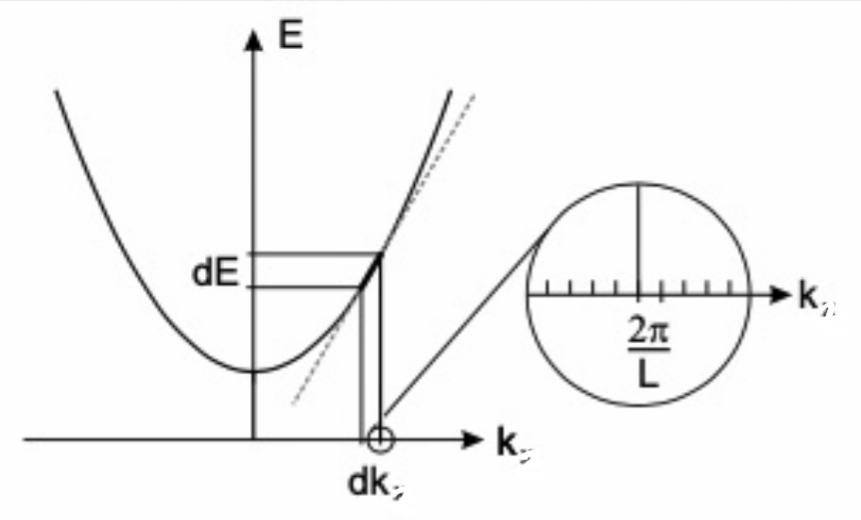
Taking into account also the spin degeneracy (which doubles the number of states), we get:
Substituting this expression in
Finally, the total current
Now that we have an expression for
The factor
In summary, we have shown that the conductance of a one-dimensional system with one occupied subband only depends on fundamental constants, namely the elementary charge
Multiple bands
In this case the ideal wire is made of multiple bands, each band contributes to the current.
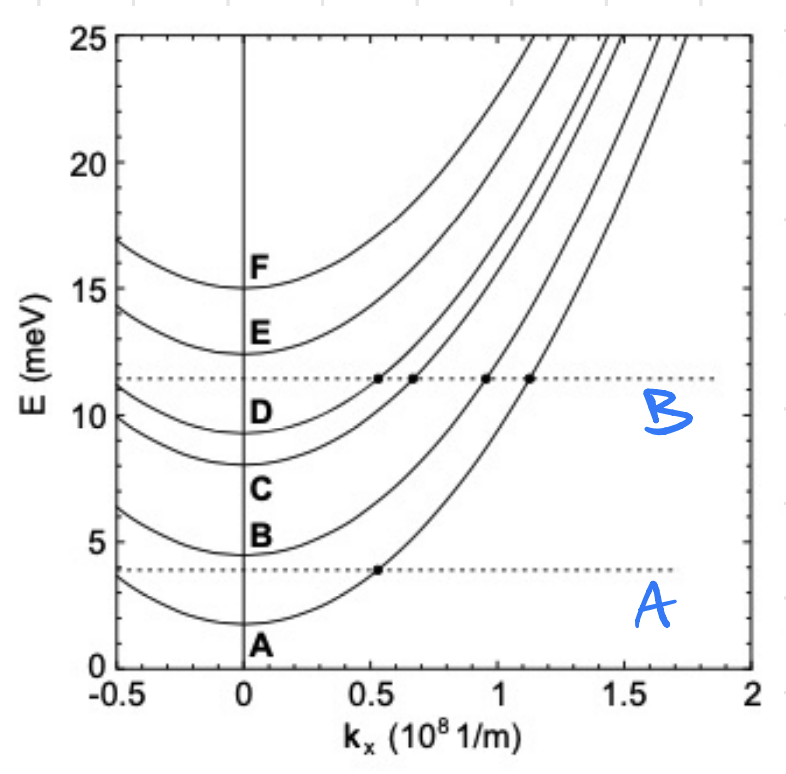
Situation A is the previous one while situation B is the general case.
To find the current energy relation in this case we need to make an approximation.
Linear response approximation
We need to prevent
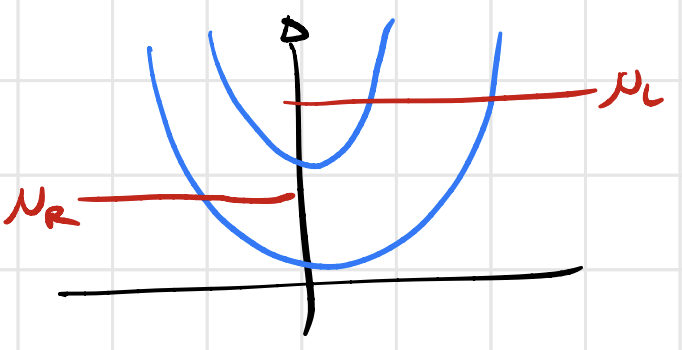
In this case the current
We define
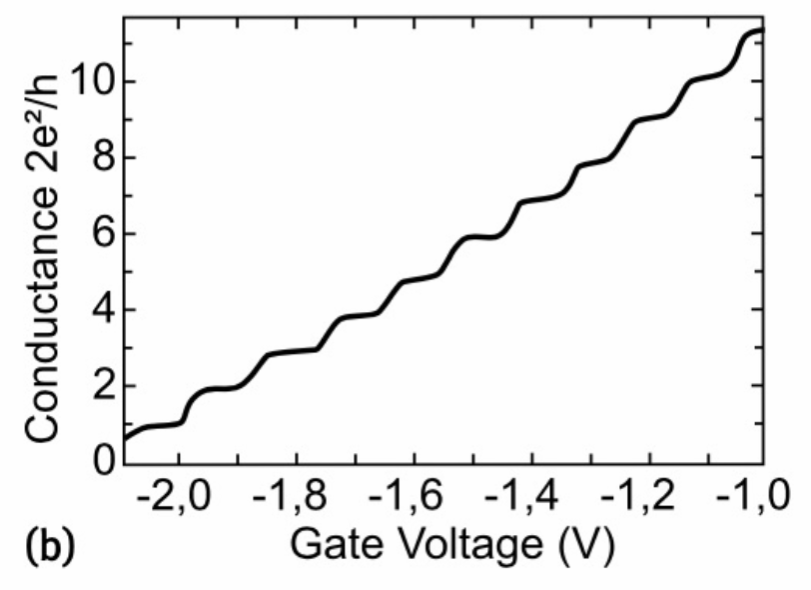
Since in real devices the electrodes are not ideal, the transmission coefficient is not unitary, and thus

